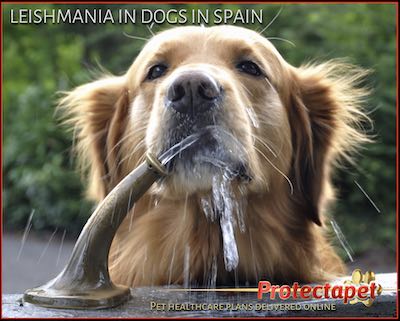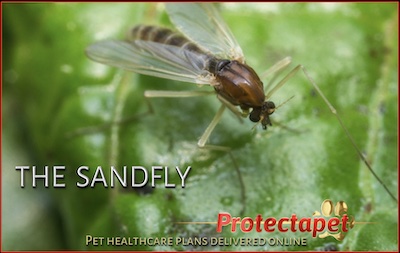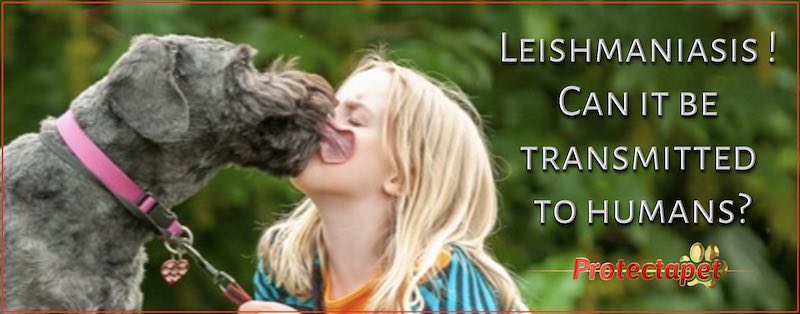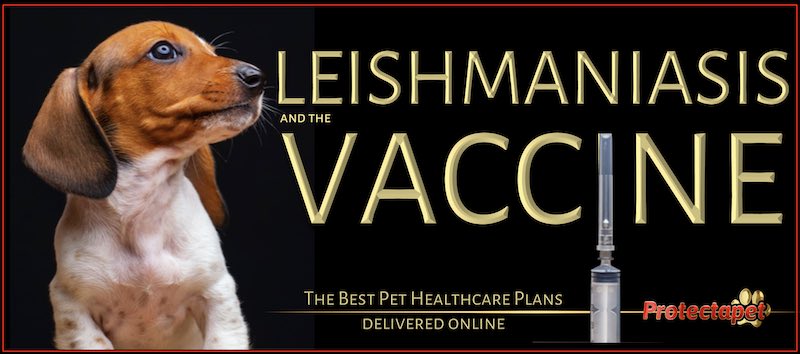I think we´ve all, well at least once, seen a truly saddening photo of an abandoned Dog on social media in recent years. You know the one, where the author is almost begging for help in finding a new home for the desperate looking Doggo. The text will read along the lines of –
“LUNA, such a sweet little girl, has spent her 3yrs of life here in the shelter and is always overlooked, great with kids & cats. Will someone give her a chance? She just has so much love to give. Has Leish – but under control with Meds”
This is the story of not just Luna, but of thousands of Dogs with Leishmaniasis. There are luckier ones (the ones with loving owners) and there are worse off (street dogs) – Luna has a place in a shelter after all.
Of course, the trouble is, that with the mention of “Leish” and “Meds” Luna´s chances of finding a home are massively diminished. Why? Well, it´s got to be the mention of Leish – (Short for Leishmaniosis) which sounds ugly and scary and Medicine – (short for Money) which sounds expensive.
A lot of us still don’t know what Leishmania is all about and maybe if we did, we would approach the idea of homing Luna (and the others) a bit differently. Wouldn’t that be a wonderful thing?

Visceral Leishmaniasis, which affects the internal organs, is particularly found in Europe in Spain as well as Italy. It is considered to be an underestimated, neglected and poorly reported disease that affects 6 out of 10 Dogs in Spain.
In Spain Leishmaniasis Infantum, the Spanish strain, is Endemic. Meaning that it is regularly found in a certain area, particularly in the more Southern Coastal areas, because the Sandfly prefers warmer temperatures. High risk areas seem to be: Andalucia, Baleares, Cataluña, Extremadura, Galicia, Murcia Region and the Valencian regions of Spain.
Leishmania is a single cell parasite that is contracted when your dog is bitten by an infected female sand fly (vector), causing what is known as Leishmaniasis (also known as Leishmaniosis). This disease can cause three different types of infection – Visceral (the most serious form - affects the internal organs), Cutaneous (the most common form - affects the skin) and Mucocutaneous (rarely seen in Spain - affects the Mucous Membranes inside the mouth, nose and throat).
It’s a clever little parasite, as the host cells that it uses to hide and multiply in, are the cells of the Dogs immune system. This causes a fair bit of havoc in terms of how the body can combat this disease. In short, once infected the immune system cannot rid the body of it completely. However, if treated early enough the parasitic load and symptoms can be managed and reduced.
-Leishmaniasis is classed as a Subtropical Disease meaning it is prevalent in tropical and subtropical areas of the world.
-Leishmaniasis is a Vector borne disease meaning that it is spread by the bite of an infected arthropod (insect)
-The Leishmaniasis Vector is the Sandfly.
-There are many species of Sandflies in Spain, however only two are considered vectors of the disease.
- It is estimated that 2.5 million dogs are infected in Spain.
- Cases of Leishmaniasis are expected to grow due to climate change, this is due to the fact that global warming will vastly increase Sandfly growth.
- A dog or cat can contract Leishmaniasis (canine and feline Leishmaniasis) and not show any signs of the disease.

Sand flies are similar to Mosquitos in the fact that they both bite humans & mammals for blood proteins. The bites can cause red itchy welts with pain that is very much dependent on each individual’s reactions. Both insects can be transmitters of various diseases, the most well known would possibly be Malaria & Yellow Fever for Mosquitos and of course Leishmaniasis for Sandflies as well as Carrion´s Disease, Filarial worms and Pappataci Fever.
It is worth knowing that Sandflies are yellow, covered in tiny hairs and much smaller than mosquitos, just 1.5mm – 3.5mm in length. They are capable of attacking in large numbers and leave a cluster of bites. You are more at risk of being bitten at dusk or dawn, it is worthwhile to be mindful of them at all times of day, particularly during warmer temperatures and near sandy wet areas. Sandflies are apparently more prone to appear when temperatures exceed 20 Degrees Celsius. It is the female Sandfly that spreads the disease as they need blood in order to produce eggs.
During the daytime Sandflies will not be seen, they will hide indoors, so to speak, inside cracks and crevices, pipes, sewers, unused buildings, tree hollows etc. At dusk they will begin their activity until dawn and they tend to be outside and are attracted to light and humidity. Due to their small size, rain and wind will hinder their pace.
Sandfly season is usually from May through to October, increased warm weather however will encourage activity all year round. With so called climate change, it seems that if temperatures continue to increase, the sandfly population could be poised for a dramatic explosion in numbers.

Yes, humans can contract Leishmaniasis and in exactly the same way that dogs do – a bite from an infected female sandfly. It has also been reported by The World Health Organisation that it can be transferred from mother to baby, Dog to Puppy and by sharing syringes.
Although cats can contract Leishmaniasis (again, via the Sandfly) it is actually very rare. However, there has been an increase in reported cases in Endemic areas. If you suspect that your Cat has contracted it, please contact your Vet immediately for direct advice.
It is very important for you to know that you cannot contract Leishmaniasis from your Dog if they have it. You can hug, kiss, feed and care for them as you always do, without risk.

It has been found in ongoing studies that German Shepherds, Boxers, Doberman Pinschers, Cocker Spaniels & Rottweilers seem to be more susceptible to the disease than other breeds such as the Ibizan Hound & the Podenco. A study found that Ibizan hounds in particular have had a higher exposure to Sand flies than many other dog breeds, resulting in a higher immune response to the disease. This is probably because Ibizan hounds are one of the oldest breeds of dog and have inhabited the Balearic Islands (a high-risk area) since their introduction in 800 B.C.
Dogs being imported from the United Kingdom had a very high incident rate of catching Leishmaniasis due to the fact that their immune system had never been tested with the disease as the disease is very rare in colder climates.
It could be that your dog just seems a bit tired these days, but then maybe you notice some sores around his ears or mouth. It could be that you then notice that he seems a bit thinner than usual…
Skin sores, sores inside the mouth, nose & ears, nosebleeds, ulcers, high temperature, weight loss, hair loss -particularly around the eyes, brittle claws, dandruff, skin on nose and pads thicken, vomiting, limping, swollen glands, cloudy eyes.
This is only a guide, however if you have some concerns, it is always best to take your Dog to the Vet for a check-up. The earlier the diagnosis, the better, because treatment is likely to be so much more successful and effective in the earlier stages of the disease. It is worth noting that after coming into contact with an infected female sandfly and contracting Leishmaniasis, the actual symptoms could in fact take months or years to present.
WHY? Without going into too much detail... this is because the “Leishmania Protozoan parasite” will hide, grow and multiply in the “host” cells of the Dogs immune system. When/if the cell bursts, more parasites are able to infect more healthy cells and so on.
Depending on what symptoms your Dog is presenting, plus his medical and travel history. The vet will want to take urine and blood samples. They can also sample the Lymph Nodes or Bone Marrow - Serological Testing – in order to detect the parasites under a microscope.
 WHAT IS THE TREATMENT FOR LEISHMANIASIS?
WHAT IS THE TREATMENT FOR LEISHMANIASIS?Stage 1: Mild – Mild symptoms such as skin sores.
Stage 2: Moderate – Symptoms may be as above as well as weight loss, nosebleeds,diarrhoea, high temperature and sores in the mucous membranes.
Stage 3: Severe – As stage 1 and 2 with also damage to eyes, joints and Kidneys caused by antibodies.
Stage 4: Very Severe – All of the above symptoms with organ failure, particularly the kidney.
Your Vet will most probably treat your Dog with a combination of drugs which may include meglamine antimoniate or miltifosine as they are probably the most effective drugs against this horrific disease that have been developed for the treatment of Canine Leishmaniasis. Depending on the Vet, the first course is given by injection with subsequent courses by mouth. These drugs will help to reduce the symptoms of the disease but unfortunately as mentioned earlier, the parasite will always remain.
Your Dog will need to have regular check-ups at the Vet for life. This will help to manage, monitor and deal with relapses quickly.
There are so many happy success/recovery stories of Dogs who have returned back to their happy and healthy selves due to the treatment and diligence of their Vets and owners. Of course, there will always be a risk of a relapse or flare up. However, alongside keen observation of your Dog and regular check-ups at the Vets, things will hopefully be manageable.
As always, it is preventative measures that will pay dividends. Never skip checkups and always use the treatment prescribed by your vet to the letter. If you do not take a course of medicine correctly and fail to complete the course, this could cause the parasite to develop a resistance to the drugs. As Leishmaniasis is an ongoing condition that your dog has to live with, it is imperative that they respond well to the medicines given.
The treatments for Leishmaniasis have and are still improving year on year, so there is lots to be hopeful for.

Avoid walking your Dog anywhere near areas of sand and water particularly at dusk & dawn. Beaches are favourite areas for Sand fly infestations.
Use repellant collars and/or spot on treatments. Take care to use these products correctly and according to the instructions, otherwise the effectiveness will be compromised.
Please know that these are topical insecticides that will help to “reduce” the transmission of Leishmaniasis from Sand Fly bites.
Do buy your collar from your Vet or a recommended retailer as there are a lot of counterfeit options out there, that no doubt will give little or no protection.
Get your pet Vaccinated immediately.

Contact your Vet for advice on the available Vaccines. These vaccines aim to reduce the development, symptoms and parasitic load of Leishmaniasis.
If you do decide to get your dog vaccinated please consider continuing to use a repellent collar such as a Scalibor collar, particularly during the hotter seasons of the year.
I am very happy to say that the Protectapet Healthcare Plans do cover the veterinary treatment of Canine and Feline Leishmaniasis PROVIDED that your pet is always fully vaccinated.
There are ongoing studies into the use of plant substances for the treatment of Leishmaniasis. It appears that there is evidence to support an immunomodulatory effect - ( the stimulation or suppression of the immune system) which is important and potentially beneficial in the management of the disease . It has also been discovered that some natural compounds could potentially reduce the parasite load. Plant derived medicine does not seem to directly affect the parasite itself…. Yet. Whilst there is a variety of natural products on the market that provide options for us, thank fully the study and development continues.
Protectapet offer these interesting articles for information purposes only. Care is taken to ensure that the information is correct at the time of going to print, but like all things printed, the information contained within them can change rapidly, particularly when it pertains to treatments for diseases in pets or the type of diseases under discussion. If you should happen to spot a mistake, or have additional information that may help our clients receive the latest information please contact us.
Copyright and all rights reserved, Protectapet, The european Pet Healthcare management Organisation.
this article "Leishmaniasis in Cats and Dogs in Spain" has been written in collaboration with Tangalina and White Mouse Media on behalf of Protectapet.